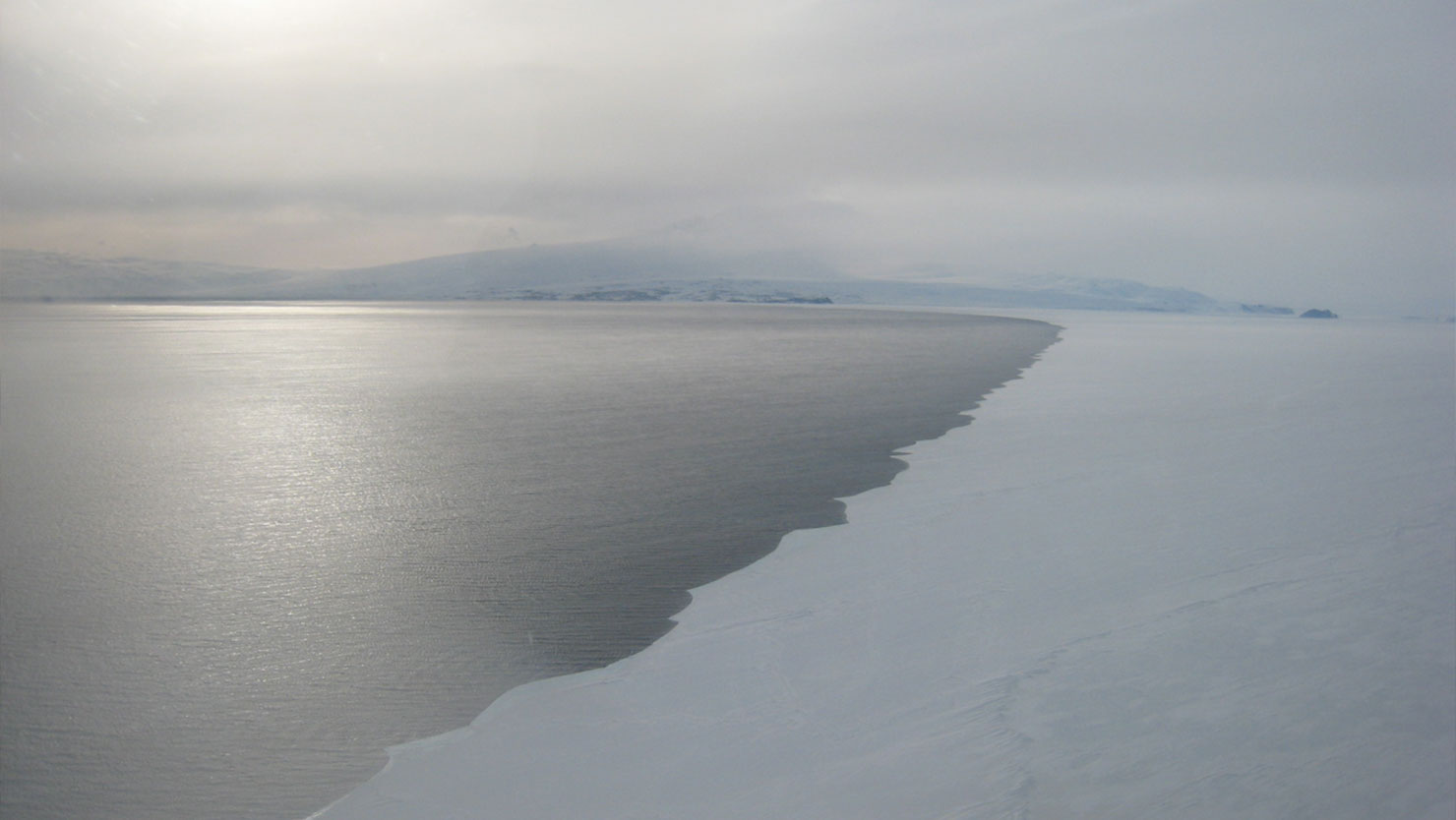Polynya opens in the Ross Sea

A helicopter pilot recently sent us an image of the area we are planning to sample, and the stable sea ice we intended to use as a platform for drilling and sampling is now a giant stretch of open seawater!
A large opening like this is a polynya, a term borrowed from the Russian meaning 'little field'. Polynyas are areas of open water surrounded by sea ice, and can range in size from hundreds of meters to hundreds of square miles. The type of polynya you see in the above picture is a latent heat polynya, and is actually not caused by warming and melting of the ice, but rather by the intense winds which funnel down off the Antarctic ice sheets. These winds are called katabatic winds, and in Antarctica they are formed when cold dense wind drains off high altitude polar ice cap and blows offshore, sending pack ice out to sea and creating large patches of open water. The average elevation of the Antarctic polar ice cap is 10,000 feet, so as rivers of cold dense air sink off the ice cap and down to the coast they gain velocity: katabatic wind speeds at the continental margin have recorded at almost 200 m.p.h.
Polynyas are highly productive areas of the Antarctic ecosystem. The removal of sea ice exposes water to sunlight, allowing microscopic plants - phytoplankton - to bloom, and it is these microscopic plants which form the base of the Antarctic food chain. Large blooms of plankton attract grazing krill and fish, which are in turn food for Antarctica's more famous air breathing fauna: seals, whales and penguins. In fact, many mainland penguin colonies are located near places where annual polynyas are known to recur, as there is a guaranteed source of food for the nesting penguins.
Looking back at our original expedition plan, we will probably have to adjust the locations of several of the sampling stations: locations 7 and 8 will have to be shelved, and stations 3 & 4 will have to be moved further south towards the Marble Point Traverse. Still, the size and extent of this year's polynya should generate some excellent data on plankton dynamics, as well as attract some amazing wildlife, so stay tuned!
